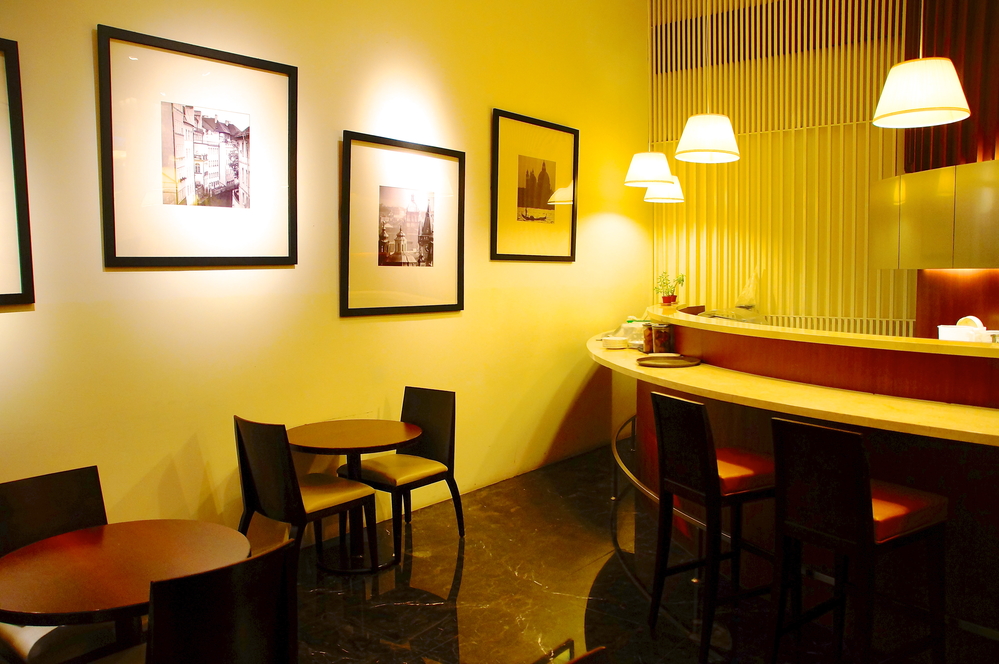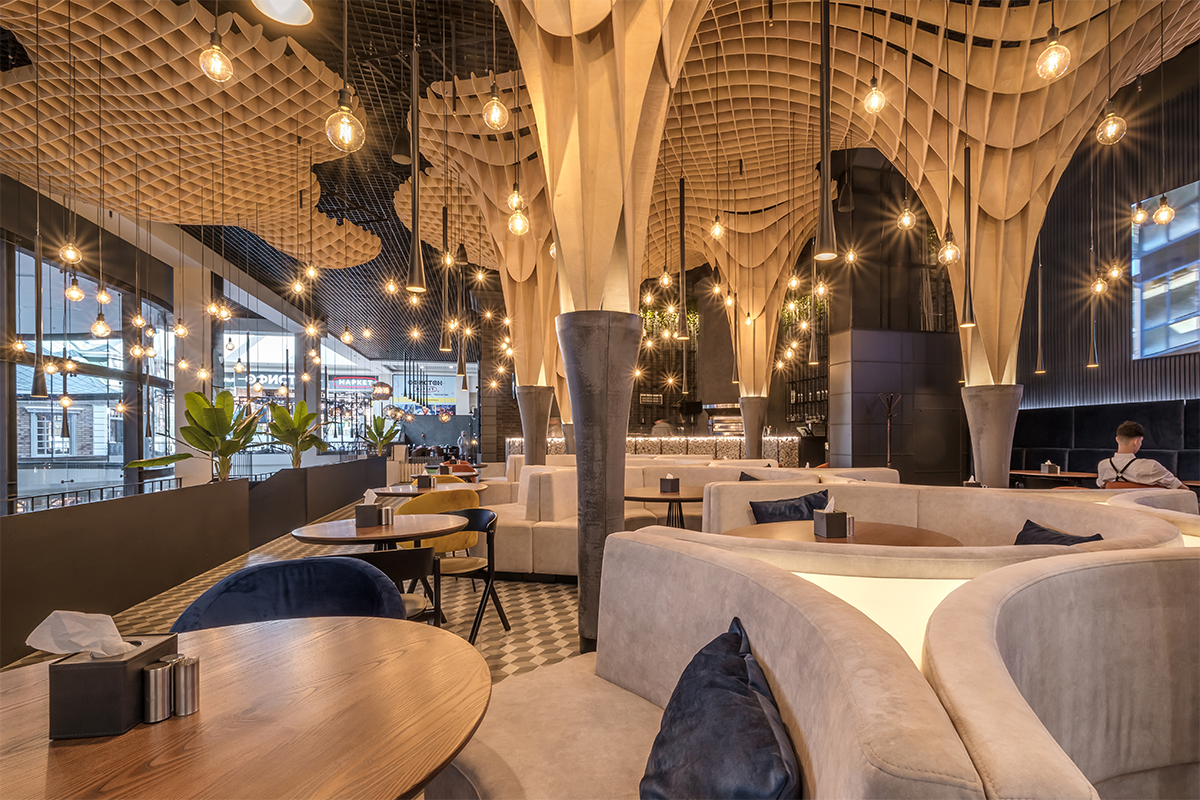Savor Authentic Eastern Cuisine With a Pan-Asian Spin for a Culinary Journey
Getting started on a cooking journey through genuine Eastern food, improved with a Pan-Asian twist, offers an unique chance to discover the rich tapestry of flavors that define the area's varied cooking traditions. As you ponder these luring meals, think about the cultural stories and historic impacts that form them, each bite using a story waiting to be uncovered. Best ambiance restaurants Islamabad.

Checking Out Pan-Asian Tastes
In the realm of international gastronomy, Pan-Asian cuisine stands out for its impressive diversity and the unified interaction of tastes from different Asian cultures. This culinary approach commemorates the special active ingredients and rich practices located across the continent, producing a tapestry of preferences that is both intriguing and satisfying. Key to Pan-Asian food is its capability to balance contrasting tastes-- pleasant, salty, spicy, and sour-- while highlighting the freshness and quality of each ingredient.
From the umami-rich soy sauce of Japan to the intense chili peppers of Thailand, Pan-Asian cuisine supplies a considerable scheme of tastes. These elements are often combined in innovative methods, boosting recipes with layers of intricacy. For example, using great smelling natural herbs such as lemongrass and cilantro, common in Vietnamese and Thai food, adds a revitalizing illumination to dishes, while the consolidation of coconut milk supplies a velvety, rich appearance.
The emphasis on fresh produce and aromatic seasonings ensures that each dish is not only a banquet for the taste however likewise for the detects. Pan-Asian food welcomes diners to start a cooking trip, checking out the substantial and differed landscapes of Asian gastronomy with every bite.
Combination Recipes to Attempt
While Pan-Asian food is commemorated for its standard flavors, the contemporary culinary landscape is increasingly welcoming blend dishes that mix these timeless aspects with impacts from other regions. This innovative technique not only honors the abundant heritage of Oriental cookeries yet also introduces unique taste experiences that attract contemporary palates.
A prime instance of such a blend recipe is the Korean-Mexican taco, where marinated bulgogi beef is wrapped in a cozy tortilla, topped with kimchi and a hot gochujang-infused salsa. This mix marries the strong, mouthwatering tastes of Korea with the vibrant, fresh aspects of Mexican food. In a similar way, sushi burritos have actually gained popularity, amalgamating the fragile artistry of Japanese sushi with the passionate, hand-held convenience of a burrito, usually featuring combination ingredients like tempura shrimp and avocado with a drizzle of wasabi mayo.
Another noteworthy meal is Thai curry ramen, which infuses the luscious, fragrant spices of Thai curry right into the soothing brew of traditional Japanese ramen, producing a harmonious mix that entices the senses. These blend meals extend past plain novelty; they stand for a culinary dialogue in between societies, motivating exploration and technology worldwide of Pan-Asian cuisine.
Essential Components and Flavors
To absolutely appreciate Pan-Asian food, one should comprehend the crucial components and flavors that form its structure. This varied cooking style draws from a rich tapestry of Eastern customs, employing a harmonious mix of flavors and appearances.
Aromatic components are pivotal, with garlic, lemongrass, and ginger being ubiquitous across various Pan-Asian recipes. These components offer an aromatic base that enhances the intricacy of tastes. Spices such as celebrity anise, cardamom, and cinnamon introduce warmth and character, echoing influences from areas like China and India.

Cooking Techniques and Tips
Mastering their explanation the art of Pan-Asian cuisine calls for familiarity with its unique cooking strategies, each adding to the dynamic tapestry of tastes this culinary tradition is commemorated for. Central to these techniques is the stir-fry, a fast cooking technique that maintains the dietary stability and brilliant colors click here for info of ingredients. Making use of a wok, the stir-fry technique permits also warmth distribution, essential for accomplishing the characteristic structure and taste equilibrium of Pan-Asian dishes.
An additional essential technique is steaming, specifically prevalent in Chinese cuisine. This mild method preserves the natural tastes and nutrients of active ingredients, making it perfect for fish and shellfish and vegetables. Dumplings, a precious staple, often profit from steaming, causing soft, succulent textures.
Grilling, also important, presents smoky depths to dishes such as Oriental bulgogi or Japanese yakitori (Best ambiance restaurants Islamabad). This technique frequently involves seasoning active ingredients, enabling flavors to pass through deeply before cooking over an open fire or warmer
Lastly, understanding the art of stabilizing flavors-- pleasant, sour, salty, bitter, and umami-- is crucial. Properly layering these components can elevate a meal from common to extraordinary, supplying a complicated and satisfying cooking experience that symbolizes the significance of Pan-Asian food.
Dining Experiences Worldwide
Around the world, Pan-Asian food uses an unparalleled eating experience, celebrated for its abundant tapestry of flavors and vivid presentations. This cooking phenomenon has actually transcended social jimmy johns hours boundaries, recording the hearts and palates of food fanatics worldwide. In multicultural cities fresh York, London, and Sydney, Pan-Asian restaurants offer as melting pots where cooking practices from Thailand, Japan, China, and past assemble, offering restaurants with an eclectic mix of dishes that highlight the area's diversity.
The worldwide allure of Pan-Asian food depends on its ability to provide both credibility and technology. Cooks masterfully wed traditional ingredients such as lemongrass, soy sauce, and miso with contemporary methods, leading to recipes that are both acquainted and refreshingly brand-new. This blend allows restaurants to embark on a culinary journey that respects heritage while embracing modernity.
Furthermore, dining experiences are elevated through thoughtfully developed atmospheres that reflect the principles of Pan-Asian appearances. From minimal Japanese-inspired insides to vibrant Thai-themed spaces, each dining establishment supplies an one-of-a-kind setting that matches the culinary offerings. Consequently, patrons are not just eating a dish however partaking in a cultural experience, making Pan-Asian dining a truly international sensation.
Verdict
The exploration of Pan-Asian cuisine offers an extensive understanding of the intricate interplay of flavors and cooking customs across Asia. By welcoming blend meals such as Thai curry ramen and sushi burritos, the culinary trip not only highlights the adaptability of typical active ingredients yet likewise showcases cutting-edge modern strategies. This gastronomic experience, enhanced by cooking approaches and essential seasonings, offers an one-of-a-kind chance to appreciate the multiculturalism and cooking artistry that specify Pan-Asian cuisine on an international scale.
Getting started on a culinary trip through genuine Asian food, enhanced with a Pan-Asian spin, offers an one-of-a-kind opportunity to discover the rich tapestry of tastes that specify the region's diverse cooking traditions.In the world of international gastronomy, Pan-Asian cuisine stands out for its impressive diversity and the unified interplay of flavors from different Asian cultures. Trick to Pan-Asian cuisine is its capability to stabilize different flavors-- wonderful, salted, spicy, and sour-- while highlighting the freshness and high quality of each active ingredient.
